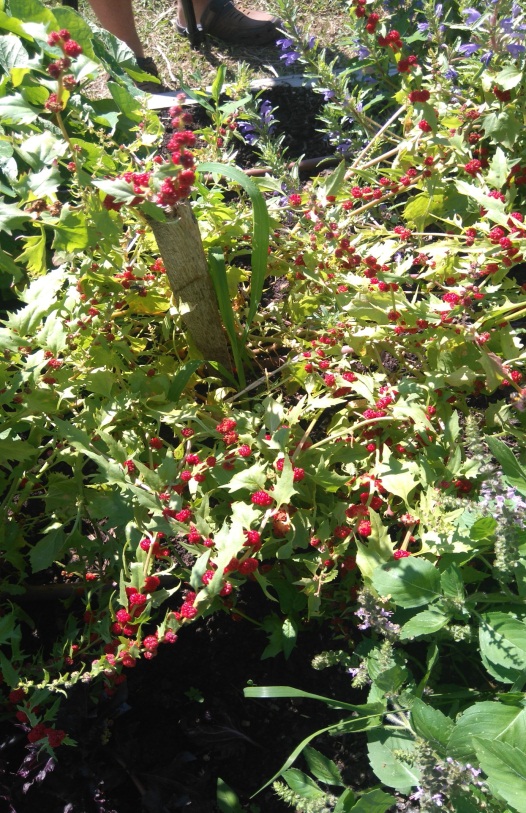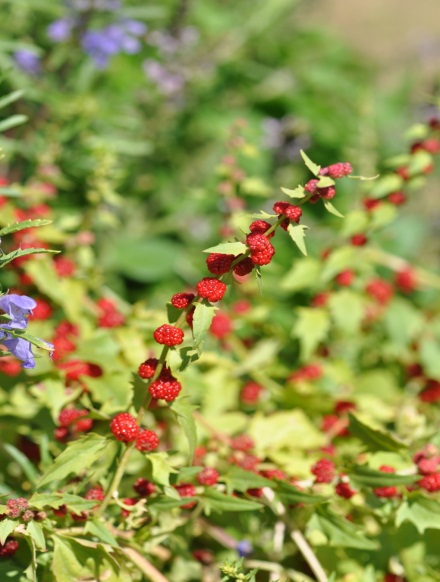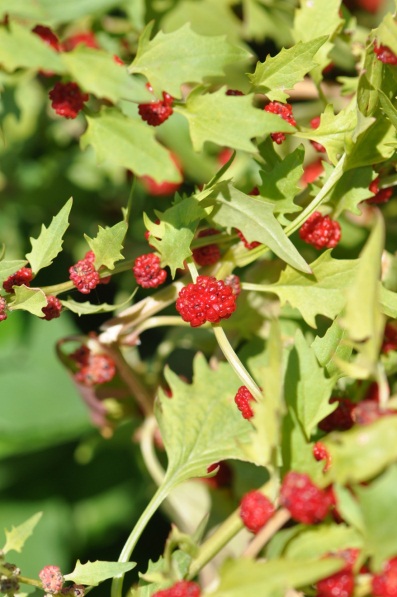Chenopodium capitatum L.



| ENG | Strawberry blite |
| SK | Mrlík hlávkatý |
| CZ | Merlík hlavatý |
| PL | Komosa głowkowata |
| HU |
Taxonomic characteristic
Order: Caryophyllales, Family: Amaranthaceae, Genus: Chenopodium
Using
Edible parts are fruits, leaves and seeds.
Alaskan Natives used this plant for food, as a valuable source of vitamins A and C. Other native American peoples used the bright red fruits as a dye for skin and clothing.
Young plants can be eaten raw or cooked (like spinach). Red fleshy flowers are also edible and make refreshing trail-side refreshment. The plants are high in calcium, protein and vitamins A, B1, B2, B6 and C but should be eaten in moderation due to its high content of oxalates. Seed can be ground into a meal and mixed with cereal flours in making bread or etc.
The plant has been used as a lotion for treating black eyes and head bruises. The juice of the seeds and an infusion of the plant have been used to treat lung congestion. A red dye is obtained from the fruit; it is also used in cosmetics as paint.
Botanical charakteristic
Strawberry blite is native to most of North America throughout the United States and Canada, including northern areas where it grows in open or disturbed areas in foothills, montane and subalpine regions. It is considered to be endangered in some states of the USA. It is also found in parts of Europe and New Zealand.
Strawberry blite is annual herb with slender taproots. The stem is erect, 10–50 cm tall, usually branched, fleshy, yellowish green, hairless. Leaves alternate, broadly arrow-shaped, 2–10 cm long, toothless or wavy-toothed, slender stalked. Flowers are hermaphrodite, deep red, pulpy, tiny, with 3–5 fleshy sepals and no petals; many flowers in round 1–1.5 cm heads from leaf axils, often forming interrupted spikes on upper stem. Fruits are black, lens–shaped seeds about 1 mm small, enclosed in red, fleshy calyx. Flowers in June to August, and the seeds ripen from Aug to September, and they are pollinated by wind.
Why to have the plant in your garden:
Both the leaves and berries are edible. I usually eat the younger leaves fresh in salads, and use the older leaves for cooking. The leaves taste a lot like mild spinach. The berries are bland and mildly sweet, quite similar to mulberries with pronounced seeds. The plant is high in vitamins A and C and lutein.
Text:
Ing. Ján Farkaš, SUA, Nitra, Slovak Republic
Photo:
Dr. Ivana Mezeyová, Dr. Ján Mezey, SUA, Nitra, Slovak Republic
Links to scientific articles
https://gobotany.newenglandwild.org/species/chenopodium/capitatum/
http://botany.cz/en/chenopodium-capitatum/
http://www.pfaf.org/User/Plant.aspx?LatinName=Chenopodium+capitatum

